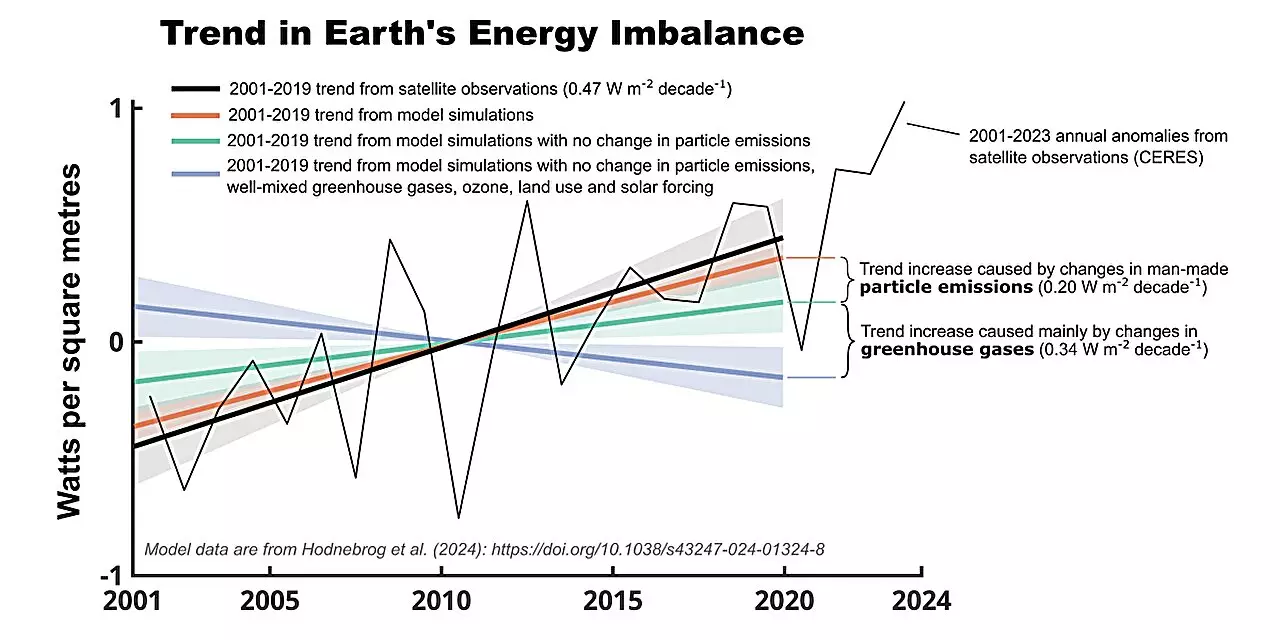Recent studies have shown that reductions in emissions of tiny particles, which are the major cause of air pollution worldwide, have contributed to an increase in heat in the Earth’s climate system. Satellite measurements have demonstrated that more heat is being absorbed by the Earth’s atmosphere from the sun, compared to the amount of terrestrial energy escaping back to space. This imbalance in Earth’s energy budget results in the accumulation of heat and contributes to the warming of the Earth’s surface.
While man-made emissions of CO2 and other greenhouse gases have been recognized as the primary drivers of global warming in recent years, emissions of particles have historically acted as a cooling mechanism for the planet. Particularly, sulfate particles have been known to reflect sunlight and help in cooling the Earth. However, the cooling effect of particles has reversed in the past few decades due to extensive efforts to improve air quality in various regions globally. This shift in the cooling effect of particles now contributes to warming the Earth’s climate.
Impact on Climate Models
In a recent international study led by CICERO, researchers used the latest generation of global climate models to simulate the impact of reductions in man-made particle emissions. The study compared the model results to satellite measurements of the Earth’s energy imbalance trend from 2001-2019. The findings revealed that accounting for the recent reductions in particle emissions was crucial for the models to accurately reflect the satellite measurements of the Earth’s energy balance trend. When the models assumed that particle emissions remained consistent over the period, the simulated heating of the Earth was significantly lower.
The lead author of the study, Øivind Hodnebrog from CICERO Center for International Climate Research, emphasized the importance of continuous satellite measurements of the Earth’s energy budget. The research underscores the need for ongoing monitoring to understand why the Earth’s energy imbalance is increasing and driving global warming, sea level rise, extreme weather events, melting of snow and ice, and other aspects of climate change. Norman Loeb, a senior technologist at NASA and co-author of the study, also highlighted the significance of continuous satellite measurements in climate research.
While addressing air pollution is essential for public health and environmental reasons, there are trade-offs associated with improving air quality. The removal of reflecting particles, which contribute to cooling the Earth, results in an immediate disappearance of the particles and their cooling effect. In contrast, long-lived greenhouse gases like CO2 remain in the atmosphere for centuries after they are emitted, leading to prolonged warming effects. The study’s co-author, Gunnar Myhre from CICERO, noted that the additional warming effect resulting from the removal of cooling particles was anticipated by researchers for a long time and underscores the importance of understanding these dynamics for future climate mitigation efforts.
The recent reductions in man-made particle emissions have significant implications for Earth’s climate system. While efforts to improve air quality are crucial, it is essential to consider the trade-offs and long-term impacts on global warming and climate change. Continued research and monitoring of the Earth’s energy budget through satellite measurements are vital for informing strategies to address the evolving challenges of climate change.



Leave a Reply